ZWO ASI2600MM Review
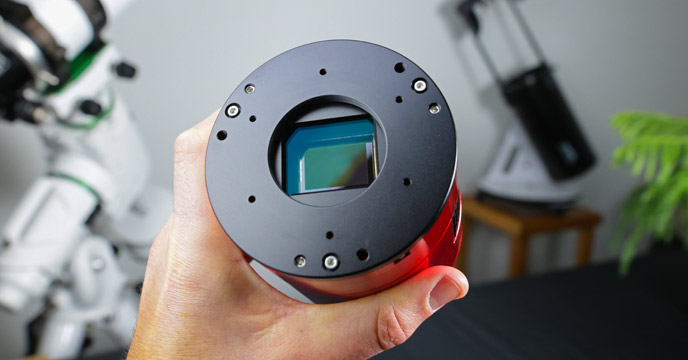
This article was last updated on February 25, 2025.
The ZWO ASI2600MM Pro mono is the much-anticipated monochrome version of ZWO’s popular ZWO ASI2600MC Pro dedicated astronomy camera. It houses a 26-megapixel Sony IMX571 back-illuminated sensor and some seriously impressive specs.
This camera uses a highly sensitive, cooled, monochrome CMOS sensor in the APS-C format. Its biggest selling feature is the sensor’s size and resolution. It is the perfect companion to a ZWO rig controlled via the ASIAIR Plus.
In this review, I’ll cover everything from the impressive specs to the unfortunate oil leak issue and ZWO’s response. ZWO sent me a demo copy of the camera in 2021, and I have been using it continuously for deep-sky astrophotography ever since.
It is the camera behind some of the best images I’ve ever taken. The QE, dynamic range, and resolution of the IMX571 sensor come together to form one of the best astrophotography cameras of all time.
What do all of these images have in common? You guessed it.
ZWO ASI2600MM Pro Review
This article was originally shared in early 2021 and has been updated to reflect my latest user experiences and every photo I’ve taken with it for almost 4 years. I hope that my image examples and hands-on experience help you make an informed decision about your next astrophotography camera purchase.
The following video was created very soon after the camera was originally announced, and I had limited testing opportunities due to the weather. Of course, the oil leak issue had not been experienced by myself (or anyone) at this point, so I hope you’ll excuse me for not mentioning it!
The ZWO ASI2600MM Pro not only improves on nearly every aspect of its predecessor (the ASI1600MM), the sensor is now APS-C, capturing a larger field of view. In the land of deep space astronomy cameras, the APS-C sensor size is said to be “the sweet spot”, balancing a large field of view with a practical size for demanding optical systems.
If you are thinking about purchasing your first monochrome camera for astrophotography, this would be an excellent choice. It is well-supported, features some of the best camera specs in the industry, and is a practical system for a wide variety of telescope configurations.
The ZWO ASI2600MM Pro is available at Agena Astro.
Due to its impressive specs and versatility, the ZWO ASI2600MM Pro is one of the most popular cameras for astrophotography of all time. ZWO sent me an early version of the ZWO ASI2600MM Pro to test in my backyard, and report my results. I was not compensated in any way to review this camera, nor was I given any directions on what to talk about.
First light using the 2600MM Pro. 20 x 5-minutes in H-Alpha (3nm Chroma filter).
The ZWO ASI2600MM Pro Mono
The ZWO ASI2600MM Pro is a lightweight, cooled CMOS astrophotography camera that specializes in deep-sky imaging. This camera shares some features with its ASI1600MM counterpart, but the 2600MM Pro has many upgrades, including a higher image resolution, a back-illuminated sensor, a built-in dew heater, a higher full well depth, and quantum efficiency.
In fact, the 2600MM Pro’s well depth is more than twice that of the ASI1600 (50K vs. 20K), and the quantum efficiency is an impressive 91%. This is the highest QE CMOS camera I have ever used for deep-sky astrophotography.
The 2600MM Pro remains lightweight, although it is slightly heavier than the 1600MM Pro at 1.5 lbs (0.7 kg). Its look and feel are similar to those of other ZWO cameras, and it has the same power, cooling, and USB 3.0 hub ports.
As with other monochrome cameras, filters are needed with the ASI2600 to produce a full-color image. Many will use this camera for narrowband imaging, but this astronomy camera would make an excellent LRGB imaging workhorse as well.
A power cable is needed to power the cooling system, which will control the sensor temperature and help reduce noise in your image. If you are looking for a suitable power supply for the ZWO ASI2600MM Pro, I recommend using a 12V 5A AC/DC adapter, as described on the ZWO website.
ASI2600MM Pro Mono Key Features and Specs
Sensor:
The 2600MM Pro camera features a 26-megapixel sensor that provides a wider/larger field of view with increased dynamic range to deliver clear, crisp images. Another feature of the 2600MM Pro sensor is the back-illuminated sensor. This helps to reduce noise and eliminate amp glows produced by weak infrared light that appears in the corner of uncalibrated images.
Pixel size:
Pixel size of the 2600MM Pro is 3.76um. The combination of 3.76 um pixels and a larger sensor allow for a much larger resolution and overall image with a full resolution of 6248 x 4176.
You can calculate the pixel scale of your camera system by combining this value (3.76), and your telescope’s focal length. The ideal range is about 2.0 for a well-sampled image, but this is only a general rule of thumb based on optical seeing conditions.
The calculation is pixel size divided by focal length, x 206. For example, when pairing this camera with my Sky-Watcher Esprit 100 telescope, I reach a pixel scale of 1.4. (3.76 ÷ 550 x 206 = 1.4)
The ASI2600MM Pro mono is noticeably larger and heavier than my ASI294MC Pro and ASI533MC Pro.
Full Well Depth:
Full Well depth (along with bit depth), give you a better dynamic range, allowing you to take longer exposures before data clipping occurs and avoid unwanted light and bloated stars. The 2600MM Pro has a full well depth of 50,000 e which is more than double that of the ASI 1600MM Pro.
The full well capacity of a camera (sometimes called pixel well depth or just well depth) is a measurement of the amount of light a photosite can record before becoming saturated, that is no longer being able to collect any more.
Quantum efficiency:
Quantum Efficiency (QE) and read noise are the most important aspects of a dedicated astronomy camera. QE can be summarized as the percentage of light that hits the sensor and gets recorded into the final image.
A high QE and low read noise are critical for improving the signal-to-noise ratio (SNR) of an astrophotography image.
The ZWO ASI2600MM Pro boasts an impressive QE peak value of 91%, which is even higher than the QE peak for this camera’s color counterpart (6200MC Pro).
The 2600MM Pro records and converts 91% of the light hitting the sensor into a usable image which is 31% more light than the 1600MM Pro.
Read Noise:
Read noise is the noise created by the camera and includes pixel diode noise, circuit noise, and ADC quantization error noise. Essentially, the lower the read noise of your camera, the better.
The Read Noise of the ASI2600 is extremely low when compared to a traditional CCD camera. The ASI2600MM also includes a built-in “HCG mode”, which helps to reduce read noise at high gain while retaining the wide dynamic range for this camera as at low gain.
The best gain setting for the ASI2600MM Pro will depend on your astrophotography target. You’ll want to set the gain lower for a higher dynamic range (longer exposure) or set the gain higher for lower read noise in a shorter exposure project or lucky imaging.
A strong signal in a long exposure image will overcome read noise, and the calibration process of subtracting dark frames and bias frames will help correct this even further.
The Horsehead Nebula using the ASI2600MM Pro and LRGB filters.
Anti-Dew Heater:
The 2600MM Pro also includes a built-in dew heater that fits in the protective window of the camera to combat dew or ice and keep condensation off your sensor.
The dew heater can also be turned off at any time should you not want to use this feature or to save power.
Protective Window:
The 2600MM Pro includes a protective window in front of the camera sensor. The window is 60mm in diameter and 2mm thick.
Keep in mind that this is an AR (anti-reflective) coated filter, while ASI2600MC Pro (color) uses an IR CUT filter.
Cooling System:
The 2600MM Pro is designed with a two-stage cooling system that can cool the camera sensor below 35°C reducing sensor noise and exposure time.
ZWO recommends that you use a 12V @ 3A DC adapter to power the cooling. The exact connection for power on the camera is 5.5mm x 2.1mm (center pole positive). A 12V 5A power adapter is a common choice, and what I personally use.
Native Bit Depth:
The 2600MM Pro has 16-bit ADC and can achieve a dynamic range output of 14 stops to improve sharpness and contrast while allowing for smooth color transitions with gradients.
The ASI2600MM Pro supports 2×2, 3×3, 4×4 software binning (and Bin 2, Bin 3 hardware binning).
Frames per second:
Since the 2600MM Pro has a larger sensor and bit depth it is not able to record data as quickly at only 3.5 frames per second. This is one noticeable advantage of the 1600MM Pro, which may be better suited for recording planetary data or video that you plan on stacking.
This camera supports custom ROI readout modes, which allow for faster frame rates at a smaller resolution. The ZWO ASI2600MM Pro can shoot a whopping 51 FPS when shooting at a tiny 320 x 240 resolution.
The cooling fan and connector ports at the back of the camera.
The 256MB DDR3 memory buffer inside of the camera helps manage a stable transmission of data from the camera to your computer.
The Oil Leak Issue
You may have read about or experienced the common ‘oil leak’ problem with the ZWO ASI2600MM Pro. When it happens, it is frustrating for the user, and ZWO has had to do a lot of damage control in terms of service.
I have heard mixed responses about how ZWO has dealt with the situation, but I can only provide insight through my personal experiences in the matter.
The first time the oil leak happened, it was a total surprise. I took a sub-exposure image of the Rosette Nebula from my backyard observatory and noticed an odd ‘drip’ of darkness on one side of the sensor.
Until now, I had not experienced this problem, but I had heard about it in astronomy forums and on Facebook. When I saw the signature ‘oil leak’ shape, I knew exactly what happened.
I purchased some inexpensive DSLR sensor cleaning supplies on Amazon, quickly wiped away the residue on the camera sensor, and was on my way. It was a pain, yes, but I thought it was over.
Unfortunately, the oil leak appeared twice, and I now know why the astrophotographers who spent good money on this camera were so upset. If this problem has happened to you, I recommend submitting a report to ZWO.
You can read ZWO’s official response to the oil leak issue on the ASI2600MM Pro. They are now offering a free replacement or a free repair with a lifetime warranty.
This is a shame because it tarnishes one of the most incredible pieces of astrophotography gear I’ve ever used. Since the first batch of cameras with the oil leak problem went out (many units), ZWO has corrected the issue, and newer units do not have the problem.
ZWO insisted on replacing my copy of the ASI2600MM Pro with a new unit, even though I said I would rather clean the season when it happened. This is probably the best route, and many owners of this camera have done the same.
The Veil Nebula using the ASI2600MM Pro and narrowband filters.
ZWO ASI2600MM Pro vs. ZWO ASI1600MM Pro
The ASI2600MM Pro is a monumental upgrade from the aging ASI1600MM Pro in every key category. Notable improvements are in quantum efficiency, well-depth, and overall resolution.
Please see the comparison chart below for a complete overview:
| Specifications | ASI2600MM Pro | ASI1600MM Pro |
|---|---|---|
| Weight | 1.5 lbs | 1lb |
| Sensor | Monochrome | Monochrome |
| Sensor model | Sony IMX571 CMOS | MN34230 |
| Cooling System | Built-in | Built-in |
| Resolution | 26 MP APS-C | 16 MP Micro Four-thirds |
| Pixel Size in microns | 3.76 | 3.8 |
| Back-illuminated sensor | Yes | No |
| Built-in Dew Heater | Yes | No |
| Full well depth | 50,000 e | 20,000 e |
| Quantum Efficiency | 91% | 60% |
| Frames per second | 3.5 | 23 |
| Price | $2,480 | $1,280 |
ZWO ASI2600MM Pro Specifications
- Sensor Type: CMOS
- Sensor: Sony IMX571
- Mega Pixels: 26.1 MP
- Pixel Array: 6248 x 4176
- Pixel Size: 3.76 microns
- ADC: 16 bit
- Back Focus: 17.5 mm
- Camera Connection: M42 X 0.75
- Color or Mono: Monochrome
- Cooled: Cooled
- Full Resolution Frame Rate: 3.51fps
- Full Well Capacity: 50ke
- Max Frame Rate: 16fps
- Peak Quantum Efficiency: 91%
- Read Noise: 3.3e
- Sensor Diagonal: 28.3 mm
- Weight: 1.5 lb
Configurations and Back Focus
As with any dedicated astronomy camera, reaching the ideal back focus is critical to maximizing your results. Thankfully, ZWO provides a detailed back focus guide to achieve the recommended 55mm back focus of the ZWO ASI2600MM Pro.
I use this camera with a ZWO 7-position filter wheel with 36mm filters. This adds 20mm of spacing to the camera configuration, and I will need to keep that in mind when building the imaging train.
The camera attached to my Sky-Watcher Esprit 100 refractor telescope.
My current backspacing configuration of the ZWO ASI2600MM Pro.
I have the camera attached to my Sky-Watcher Esprit 100 APO to enjoy a wider field of view than I am used to with this telescope. The camera system threads directly to the telescope’s dedicated field corrector (M48 threads).
A notable change in backspacing between the ASI1600MM and the 2600MM is the depth of the sensor from the front of the camera body (17.5mm). Those upgrading from the ASI1600 must keep this in mind when building out the new system.
This camera also includes a tilt adjustment feature, which can be adjusted by using the 3 sets of screws found on the black flange of the camera. I would not recommend changing the factory tilt of the camera flange unless you are sure there is a tilt issue in your optical train.
Filter Size Recommendations
Using 1.25″ filters with the ZWO ASI2600MM Pro is possible but comes with challenges, particularly regarding vignetting. The camera has a large APS-C sensor (28mm diagonal), while 1.25″ filters typically have a clear aperture of 27mm, meaning they are just barely large enough to cover the sensor.
This can lead to noticeable vignetting, especially in fast optical systems (f/5 and below). To minimize this, the filters must be positioned as close as possible to the sensor, but even then, strong flat frame calibration will be necessary to correct for any light falloff.
Additionally, using threaded 1.25″ filters in a filter wheel can sometimes obstruct the light path, depending on the filter cell thickness.
Best Practice: Go with 36mm or 2″ Filters
- To avoid vignetting entirely, 36mm unmounted filters are a much better option for the ASI2600MM.
- If using an even faster telescope (f/4 or faster), 2″ filters are the safest bet to avoid vignetting altogether.
I use a ZWO EFW 7-position filter wheel (36mm) with Chroma LRGB, SHO filters.
Drivers and Camera Capture
I have controlled my ASI2600MM Pro with the ASIAIR Plus, as well as with Astro Photography Tool (APT) via the ZWO drivers. The ZWO website includes an extensive list of camera drivers for all of their dedicated astronomy cameras.
First, you must install the latest ASI Cameras driver on your computer, followed by the ZWO ASCOM driver that supports all ZWO cameras, the EAF (electronic automatic focuser), and the EFW (electronic filter wheel).
You can also read the full ZWO ASI2600MM Pro manual online, which includes detailed camera performance graphs, including the QE curve, dynamic range, and read noise.
Included Items with the Camera
- ZWO branded camera bag
- ASI2600MM Pro Camera Body
- M48-M42 adapter
- Printed Quick guide
- USB3.0 Cable (2m)
- M42-M42 21mm extender
- M42-M48 16.5mm extender
- 2″ cover
- Hexagon wrench
- 2x USB 2.0 cable (0.5m)
Final Thoughts
The reason the ZWO ASI2600MM Pro is such a practical choice for deep space astrophotography is the sensor size. If you have owned dedicated astronomy cameras in the past, chances are the sensor was smaller than APS-C.
For comparison, the ZWO ASI1600MM Pro has a micro 4/3 sensor, which is useful in most situations. However, you may find that a sensor of this size crops the field too much, and sacrifices the native focal length of your telescope.
I don’t know about you, but I would always take a little extra real estate on the camera sensor to collect larger deep-sky objects in a single frame.
The Lion Nebula in HOO. ZWO ASI2600MM Pro, William Optics GT81 WIFD.
Creating mosaics will be less common with this camera because you can gather so much sky in a single frame. Pair this camera with a short focal length refractor like the William Optics RedCat 51 or Radian 75, and you’ll be photographing entire regions of nebulosity in the sky.
The resolution of this sensor is incredible. I have enjoyed the small 3.76-micron pixel size of the QHY268C, and I am thrilled to now be able to shoot in monochrome with the ASI2600MM Pro.
Speaking of QHY, they too have a monochrome version of this sensor in the QHY 268M. This provides an alternative to the ZWO version for QHY fans looking for an affordable monochrome CMOS camera that delivers big results.
If you already own an ASIAIR Plus, this camera is a joy to use with the incredible plate-solving tools within the SkyAtlas planetarium. Add the ZWO AM5 harmonic drive mount, and you have a system that can do it all (and travel with).
My ZWO rig including the AM5, ASIAIR Plus, and ASI2600MM Pro camera.
The ZWO ASI1600MM Pro was one of the best-selling astronomy cameras ever, and for good reason. Some of the best amateur astrophotography images I’ve ever seen were captured using that camera.
I believe this camera is a pivotal product in the astrophotography community. If you’re one of the lucky ones that waited until the oil leak issues had been resolved, you can skip over the annoying process of replacing or fixing the camera.
I know that the process of dealing with this issue was very frustrating for early adopters of the camera, and the vendors who sold them. I think ZWO did a respectable job of addressing the issue and making it right.
I understand if this blip in the radar scares you away from this camera (or ZWO as a whole). However, I think you will be missing out on one of the best pieces of astrophotography equipment available to amateurs today.
The Seagull Nebula in SHO. Captured using the ASI2600MM mono and Chroma 3nm filters.
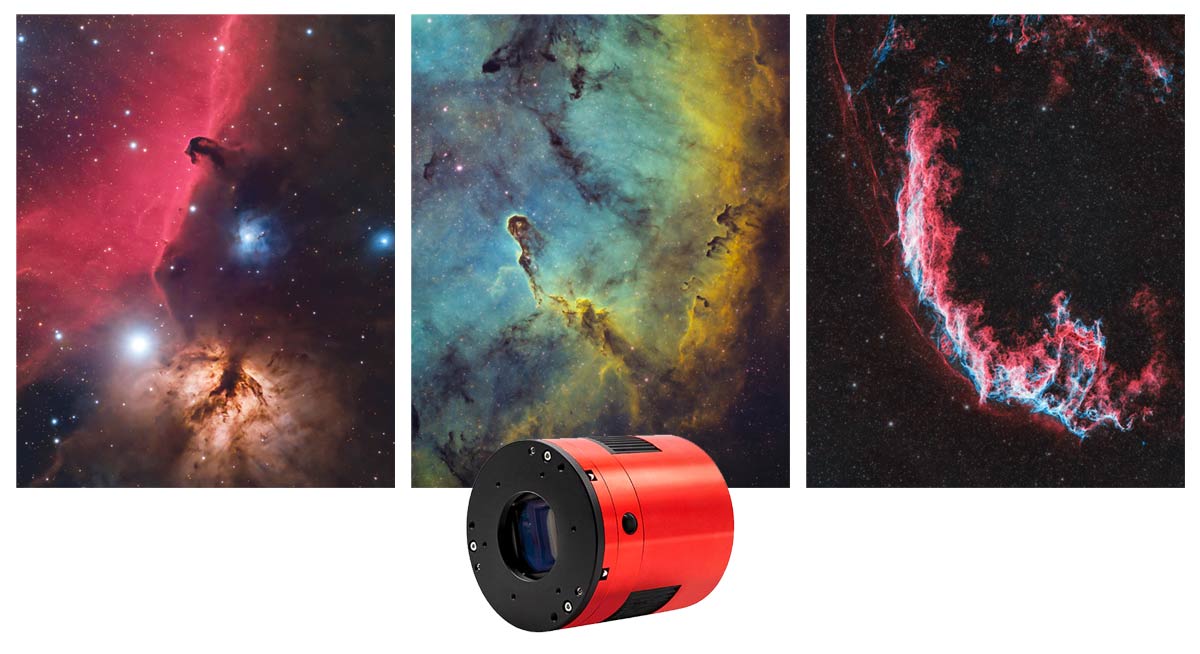

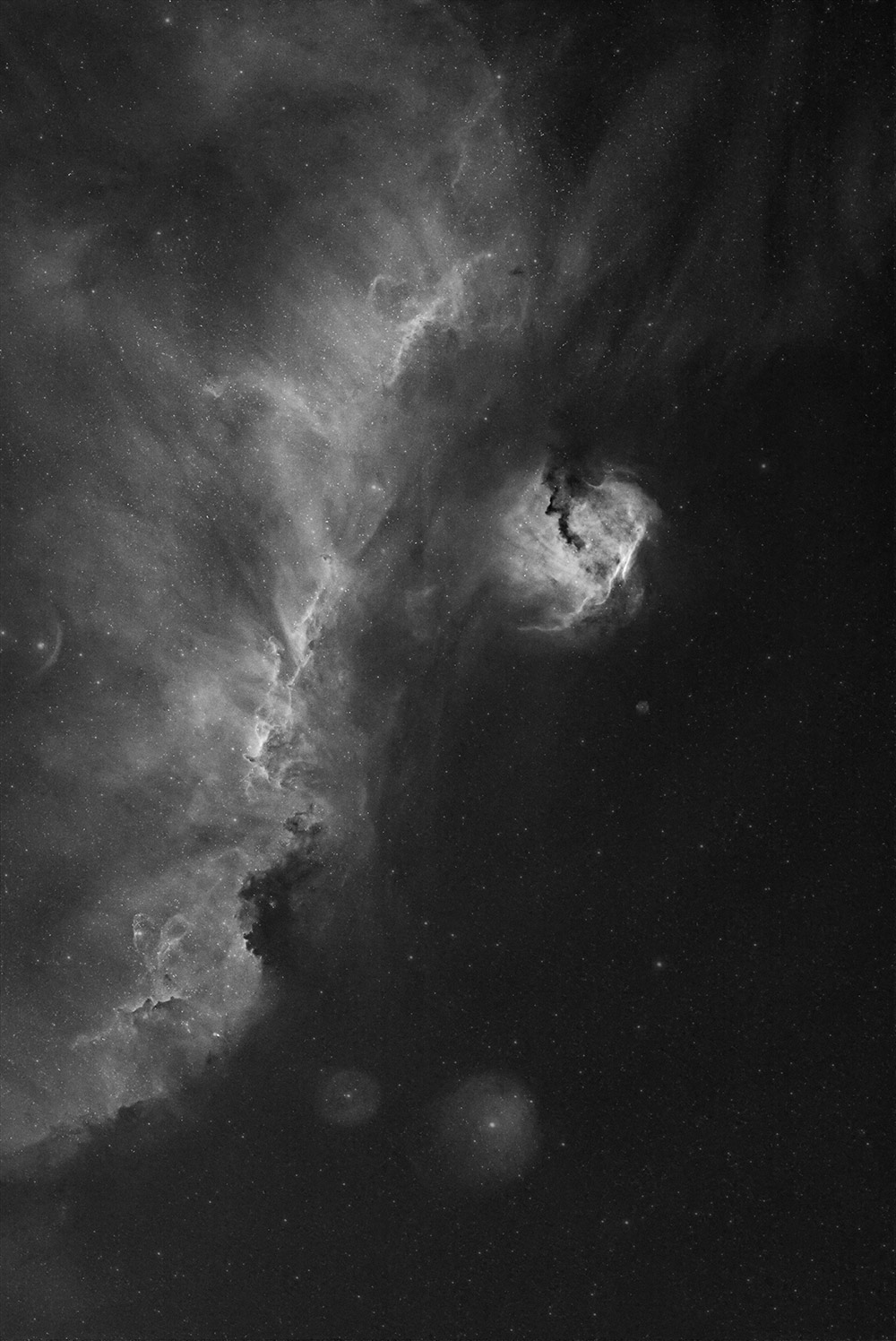

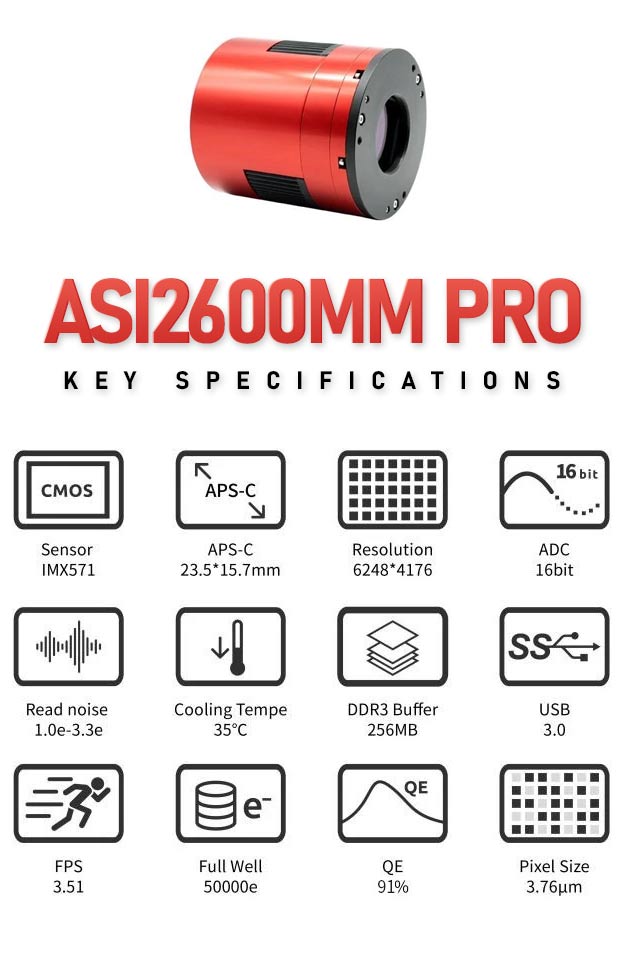

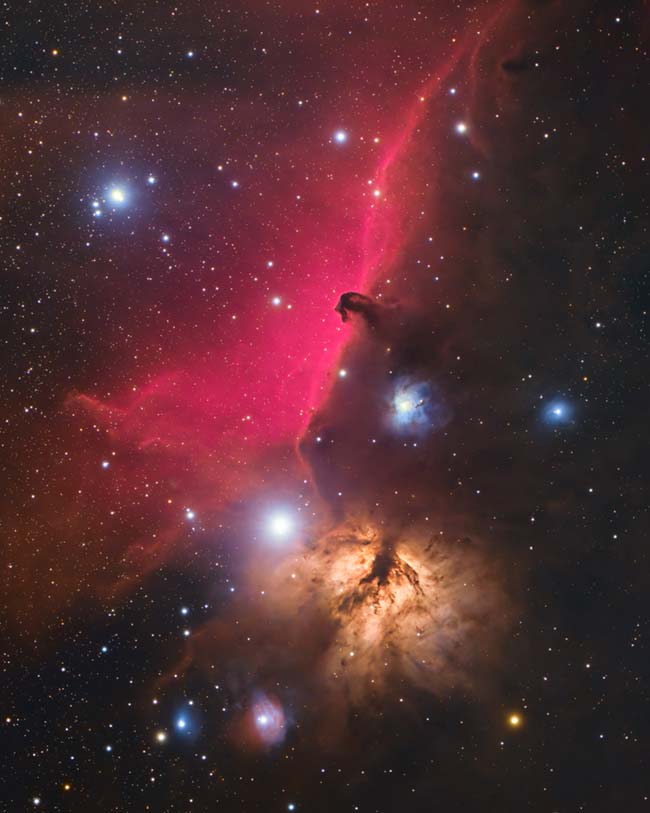
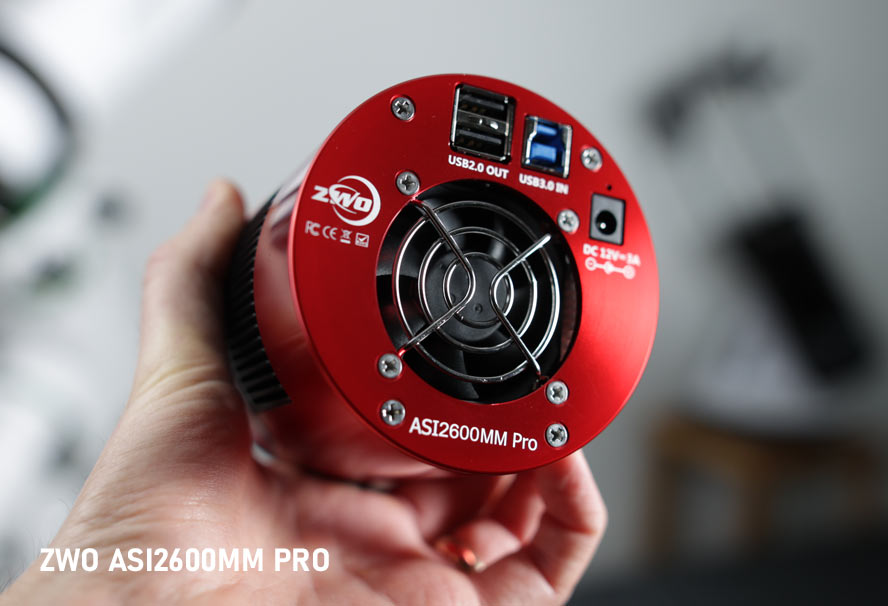
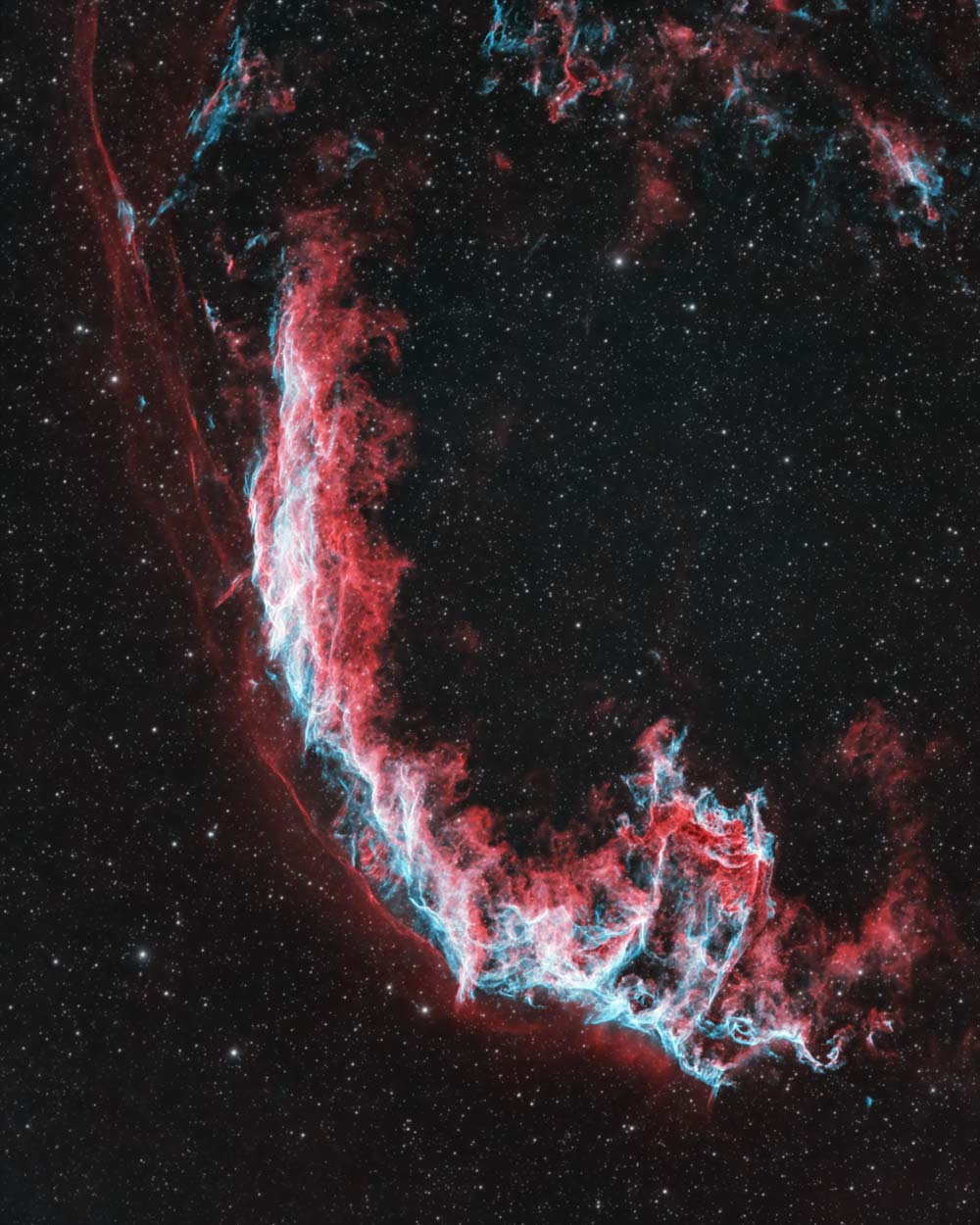


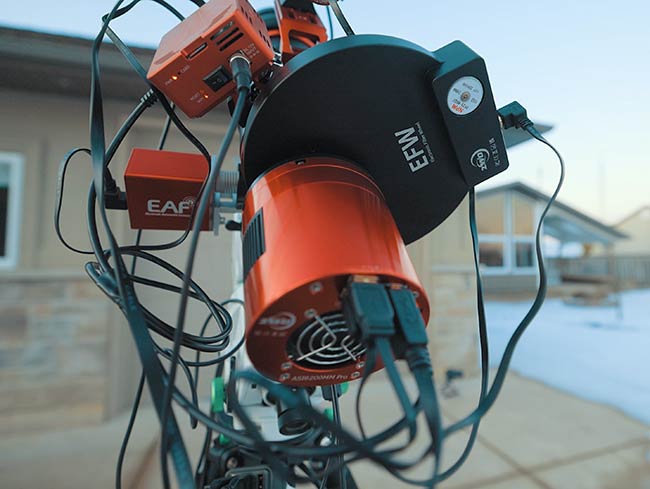
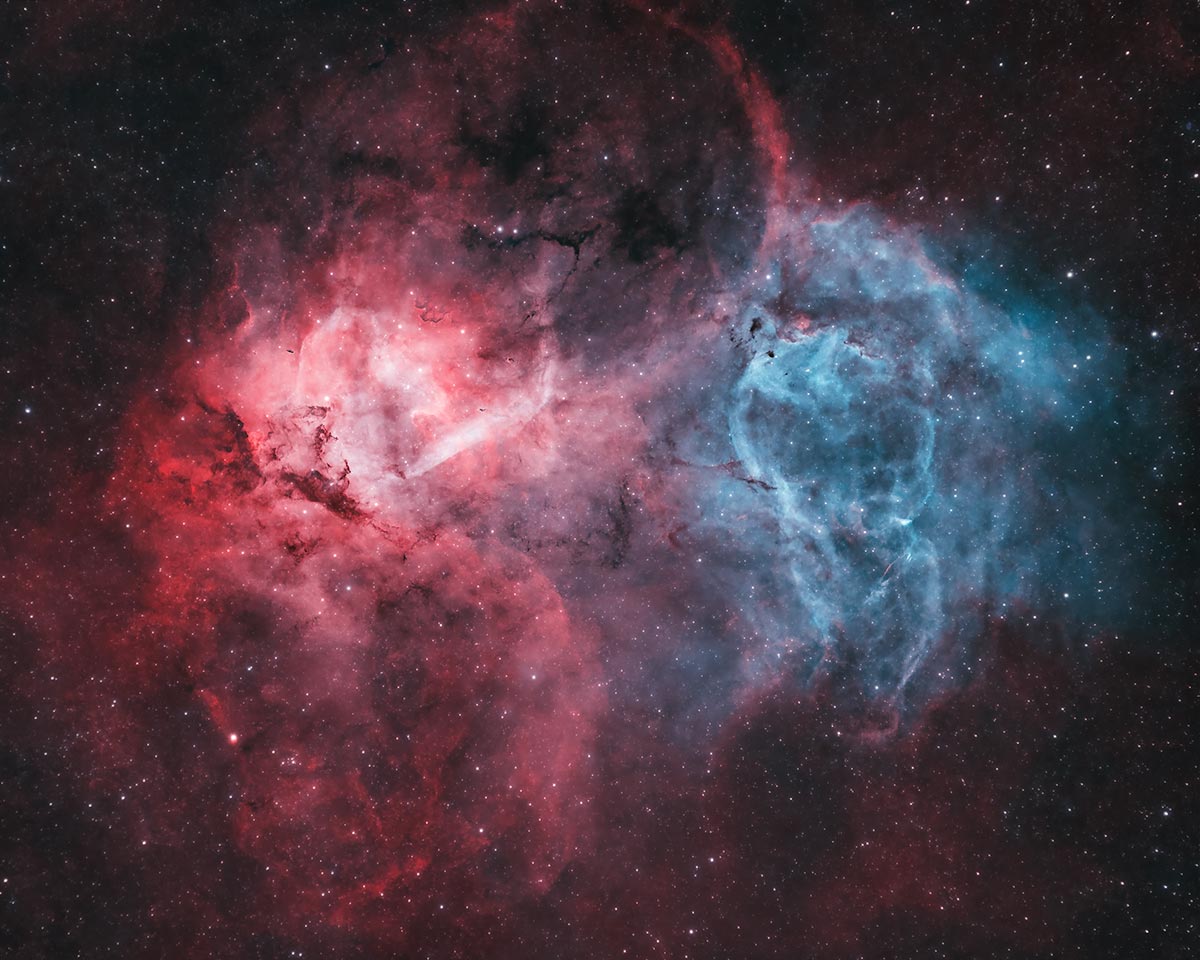
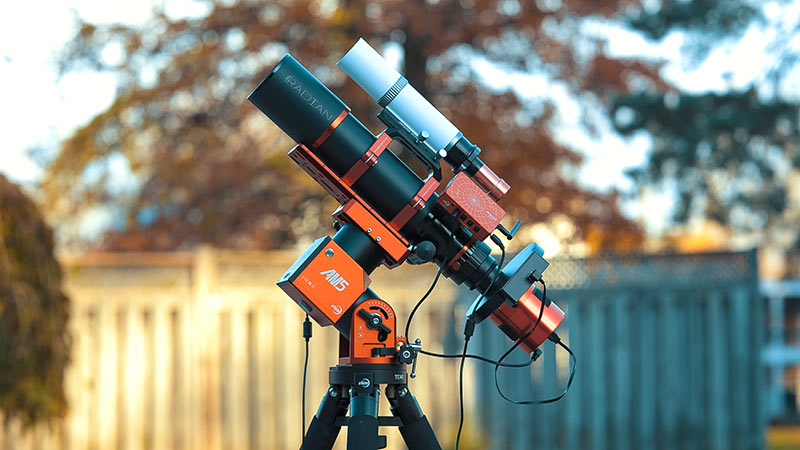




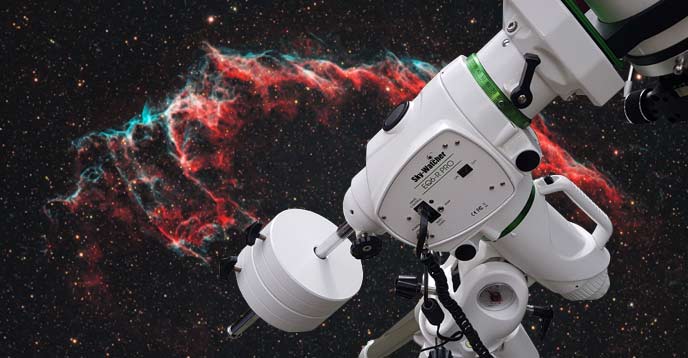
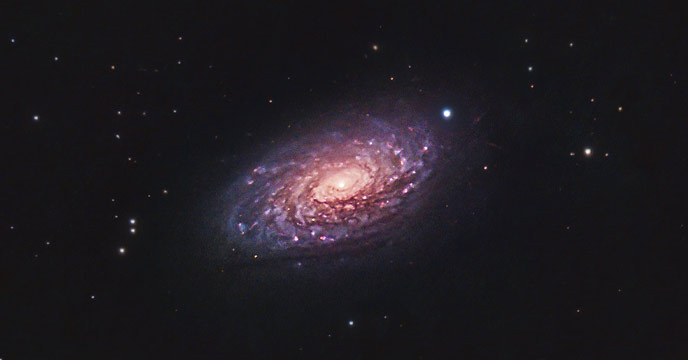

Hello Trevor I have a question. Is it possible to capture Leo’s triplet with newtonian 6inch 1200mm (no tracking mount)? I’ll give it a shot with very short exposures but a lot of them, clear skies to ya!
Hey! It is not possible to capture objects at that focal length without tracking. 135mm with super-short exposures, maybe. But not 1200mm!
Hello Trevor, very nice review
Did you have a go with the 2600MC version also ? If you did, what do you think of that OSC camera ?
Which one would you prefer, the ASI2600MC or the QHY268C ?
Kind regards
Hi Trevor,
Love your work! Like most astrophotographers a picture to me is worth 1000 words. What I would most like to see is the same target shot with the same telescope and mount, around the same time with the 1600MM Pro, 2600MC Pro and the 2600MM Pro. Any chance you might take on a project like that? I think it would go a long way to help us on the fence pick the best camera for our applications and budget 🙂
Hi Trevor
Nice review, as always.
You mentioned in your review you are waiting on an 8 position EFW from ZWO that takes 36mm filters?
Just wanted to check if I am missing such a product?
I thought that ZWO only offer an 8×2″ EFW and a newer version 7x36mm EFW?
Is ZWO releasing a new 8x36mm EFW?
Thanks
I am assuming the 2600 will also mate with the ZWO 50mm filter wheel? When the time comes to upgrade to the 6200, I won’t have to upgrade the filters.
Hi Trevor
Nice review. What would you recommend to someone graduating from dslr to monochrome cameras. ASI 2600 vs ASI 294? Given that additional filters would be additional cost. Is 2600 worth the extra cost over 294?
Also forgot to ask which filter set would you recommend with either of these cameras?
I still don’t have a chance to test the camera due to the bad weather, but I don’t have a good impression of the cooling system compared to the 1600 camera. 10 degrees Celsius is the difference and it’s not small, especially on hot summer nights. I could not achieve more than -10C with the ASI 2600mm camera while with ASI 1600, -20C on the sensor is not a problem. This is a big drawback I think given that most of the noise disappears at -20C. Also, the temperature sensor of the ASI 2600mm camera is not accurate enough, there is a deviation of 10 degrees Celsius from the actual temperature. But it may also be a factory defect. Clear skies from me.
Hi Trevor, I have a newton 250Quattro F4 and I will get the 2600mm with an efw of zwo 36mm. Could I connect it directly or do I need to put spacers on it?
How can I achieve 55mm back focus with the zwo 36mm filter wheel and the Pegasus Astro Falcon rotator? I have a at130edt with the 0.8 flattener. It has m48 male threads, so I need a m48 female to m54 male (2mm)to connect falcon rotator (18mm), m54m – m42f (2mm) to t2-t2 adapter (2mm) to connect filter wheel (20mm) to t2-t2 adapter (2mm) to camera (17.5mm) for a total of 63.5mm. Is it possible? thanks.
just wondering if it is possible to use 1.25 narrow band filters with this camera ?
My set up is with takahashi fsq-85edx, OAG, manual ZWO 1.25 filter wheel and ZWO 294mm pro. Being a bigger cps-c will this cause clipping also added back focus depth. Thanks.
You would probably get some vignetting with that setup. You could calibrate it out to a degree using flats!